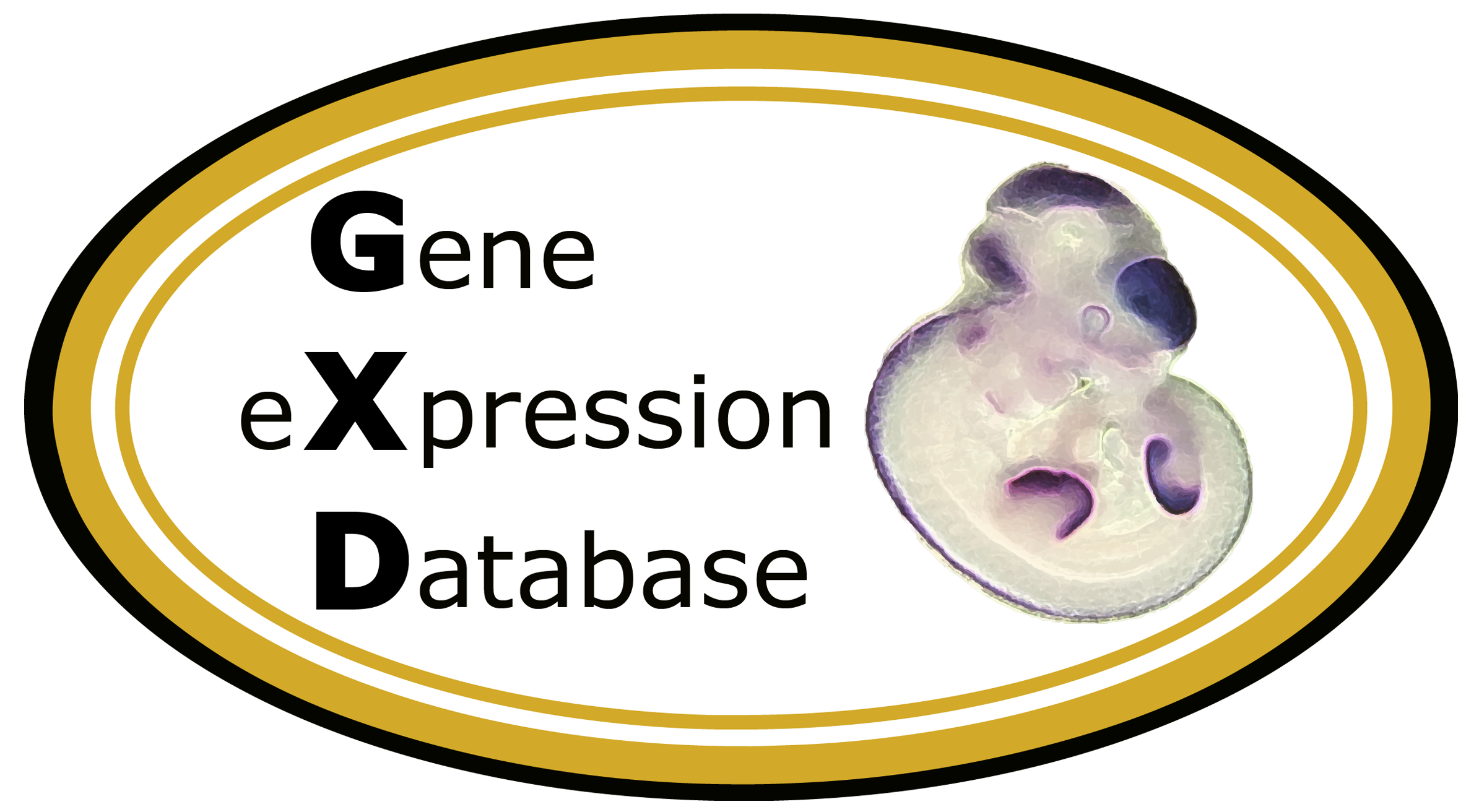Gene Expression Data
Assay Details
|
Assay
|
|
Reference:
|
J:176585
Zheng Z, et al., Developmental basis of sexually dimorphic digit ratios. Proc Natl Acad Sci U S A. 2011 Sep 27;108(39):16289-94
|
|
Assay type:
|
Immunohistochemistry
|
|
MGI Accession ID:
|
MGI:6490439
|
|
Gene symbol:
|
Ar
|
|
Gene name:
|
androgen receptor
|
|
Antibody:
|
anti-AR
|
|
Detection system:
|
Secondary antibody
|
|
|
Results
|
Specimen
2A:
embryonic day 12.5
(more  ) )
Specimen
2A:
(close  ) )
|
Genetic Background:
|
CD-1
|
|
Age:
|
embryonic day 12.5
|
|
Sex:
|
Male
|
|
Type:
|
section
|
| Structure |
Level |
Pattern |
Image |
Note |
| TS20: hindlimb digit 2 |
Present |
Widespread |
2A
|
Expression is present in ~90% of the cells, with most of the cells showing activated (nuclear) localization. The 4th digit has higher levels of activation than the second digit. Expression levels and type of expression are comparable between males and females.
|
| TS20: hindlimb digit 4 |
Present |
Widespread |
2A
,
2C
|
Expression is present in ~90% of the cells, with most of the cells showing activated (nuclear) localization. The 4th digit has higher levels of activation than the second digit. Expression levels and type of expression are comparable between males and females.
|
Specimen
2B:
embryonic day 12.5
(more  ) )
Specimen
2B:
(close  ) )
|
Genetic Background:
|
CD-1
|
|
Age:
|
embryonic day 12.5
|
|
Sex:
|
Female
|
|
Type:
|
section
|
| Structure |
Level |
Pattern |
Image |
Note |
| TS20: hindlimb digit 2 |
Present |
Widespread |
2B
|
Expression is present in ~90% of the cells, with most of the cells showing activated (nuclear) localization. The 4th digit has higher levels of activation than the second digit. Expression levels and type of expression are comparable between males and females.
|
| TS20: hindlimb digit 4 |
Present |
Widespread |
2B
|
Expression is present in ~90% of the cells, with most of the cells showing activated (nuclear) localization. The 4th digit has higher levels of activation than the second digit. Expression levels and type of expression are comparable between males and females.
|
Specimen
2E:
embryonic day 14.5
(more  ) )
Specimen
2E:
(close  ) )
|
Genetic Background:
|
CD-1
|
|
Age:
|
embryonic day 14.5
|
|
Sex:
|
Male
|
|
Type:
|
section
|
| Structure |
Level |
Pattern |
Image |
Note |
| TS22: hindlimb digit 2 |
Present |
Widespread |
2E
|
Expression is present in most of the cells, with most showing activated (nuclear) localization. The 4th digit has higher levels of activation than the second digit. Expression levels in both digits in males are higher than those seen in females.
|
| TS22: hindlimb digit 4 |
Present |
Widespread |
2G
,
2E
|
Expression is present in most of the cells, with most showing activated (nuclear) localization. The 4th digit has higher levels of activation than the second digit. Expression levels in both digits in males are higher than those seen in females.
|
Specimen
2F:
embryonic day 14.5
(more  ) )
Specimen
2F:
(close  ) )
|
Genetic Background:
|
CD-1
|
|
Age:
|
embryonic day 14.5
|
|
Sex:
|
Female
|
|
Type:
|
section
|
| Structure |
Level |
Pattern |
Image |
Note |
| TS22: hindlimb digit 2 |
Present |
Widespread |
2F
|
Expression is present in many of the cells, with most showing activated (nuclear) localization. The 4th digit has higher levels of activation than the second digit. Expression levels in both digits in females are lower than those seen in males.
|
| TS22: hindlimb digit 4 |
Present |
Widespread |
2F
|
Expression is present in many of the cells, with most showing activated (nuclear) localization. The 4th digit has higher levels of activation than the second digit. Expression levels in both digits in females are lower than those seen in males.
|
Specimen
S1A left:
embryonic day 16.5
(more  )
Note: longitudinal section; proximal phalange )
Note: longitudinal section; proximal phalange
Specimen
S1A left:
(close  ) )
|
Genetic Background:
|
CD-1
|
|
Age:
|
embryonic day 16.5
|
|
Sex:
|
Male
|
|
Type:
|
section
|
|
Note:
|
longitudinal section; proximal phalange
|
Specimen
S1A right:
embryonic day 16.5
(more  )
Note: longitudinal section; proximal phalange )
Note: longitudinal section; proximal phalange
Specimen
S1A right:
(close  ) )
|
Genetic Background:
|
CD-1
|
|
Age:
|
embryonic day 16.5
|
|
Sex:
|
Male
|
|
Type:
|
section
|
|
Note:
|
longitudinal section; proximal phalange
|
Specimen
S1B left:
embryonic day 16.5
(more  )
Note: longitudinal section; proximal phalange )
Note: longitudinal section; proximal phalange
Specimen
S1B left:
(close  ) )
|
Genetic Background:
|
CD-1
|
|
Age:
|
embryonic day 16.5
|
|
Sex:
|
Female
|
|
Type:
|
section
|
|
Note:
|
longitudinal section; proximal phalange
|
Specimen
S1B right:
embryonic day 16.5
(more  )
Note: longitudinal section; proximal phalange )
Note: longitudinal section; proximal phalange
Specimen
S1B right:
(close  ) )
|
Genetic Background:
|
CD-1
|
|
Age:
|
embryonic day 16.5
|
|
Sex:
|
Female
|
|
Type:
|
section
|
|
Note:
|
longitudinal section; proximal phalange
|
|
 Analysis Tools
Analysis Tools



 )
)
 )
)
